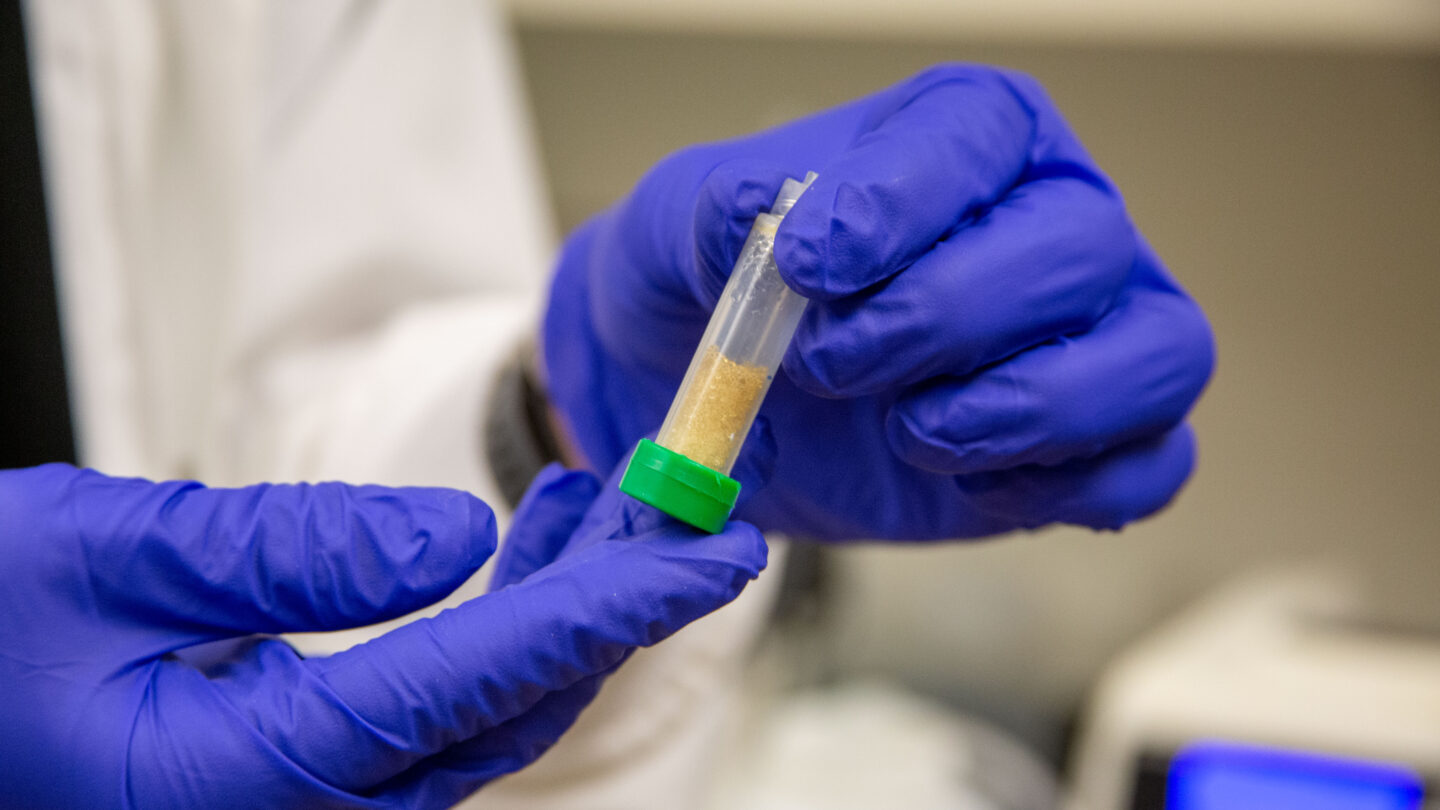Georgia experts lead PFAS contamination research

Researchers in Georgia are at the forefront of health and clean-up research for per- and polyfluoroalkyl substances (PFAS) that have become a growing public health concern nationally.
Georgians have heard a lot about these chemicals in the last few years. In 2022, a Waterkeeper Alliance study found PFAS widespread in U.S. rivers including the Chattahoochee, Altamaha and Savannah rivers. This September another report found 11 out of 52 water drinking systems tested in Georgia had PFAS.
PFAS and human health
Scientists already know that some PFAS — sometimes known as “forever chemicals” because they can linger in the environment — are linked to increased cancer risk, low fertility and other health problems. But now researchers are looking into other types of PFAS they say could be dangerous too.
Samantha Eik and Amina Samanova are researchers at Emory University’s Rollins College of Public Health, where they’ve teamed up to complete a study about PFAS and its impact on public health.
One thing that Samanova emphasized about PFAS is that the first thing people must understand is that it’s not one singular chemical, but a wide group.
“It’s a class of chemicals that has thousands and thousands of different chemicals, and many, many of them are still unexplored and we know nothing about many of them,” Samanova said.
Before coming to Emory, Samanova completed a research study in Indiana where she tested 81 people’s blood and urine in addition to household dust and drinking water. Analyzing that data, they’re looking to see patterns of exposure and how PFAS appeared in blood and urine.
The pair said they’ve started working on their follow-up project which is looking into predictors of who may be exposed to the highest levels of PFAS.
Tricky regulatory landscape
2023 has been a regulatory flurry for the EPA on PFAS. The agency has made several changes throughout the year aimed at collecting more information on PFAS manufacturing, releases and inventorying where it is in the U.S.
In August, the agency released the first set of data related to the frequency of 29 PFAS and lithium found in the nation’s drinking water systems, and at what levels they’ve been found. In October, the agency also released a new rule to improve reporting on PFAS in the national Toxics Release Inventory.
The goal is to follow the EPA’s “roadmap” outlining how the agency plans to address the widespread PFAS contamination.
These are measures protective of human health, but Eik and Samanova said the nature of PFAS throws a wrench in this regulatory effort.
Samanova explained that because there are thousands of different types of PFAS, it’s hard for a federal agency to regulate all of them. Right now, the EPA is looking at more prominently used versions of the chemical, such as PFOA. But that still leaves a lot of other PFAS on the table.
“I think legacy PFAS, we’re getting to the point where things are equivalent to the BPA-free,” Eik said. She, Samanova and researchers refer back to BPA as the “regrettable replacement.”
BPA (Bisphenol A) is largely used in plastic production, and in the mid-2010s became more of a household name when people opted for reusable water bottles and were concerned about exposure to this chemical. But Eik and Samanova said BPA as we know it was regulated, but chemical manufacturers replaced the regulated chemical with an extremely similar but slightly structurally different chemical, skirting regulations and keeping a squeaky clean BPA-free label on products.
Eik said PFAS-free products are going through the same process.
“They try to say that these short-chain or new PFAS have less adverse health outcomes because they have less carbons, whether or not that is true is still up for debate considering we’re just starting to research,” Eik said.
It’s hard to simply get rid of these chemicals, despite the adverse health problems.
“They’re a lot more useful than other chemicals so it’s more difficult to replace them,” Samanova said, often used in anything from firefighting foam to nonstick coatings.
It’s not a widespread conversation yet, but Samanova said some researchers, particularly abroad, are starting conversations about regulating chemicals as a class rather than individually trying to address these problems. But until then, she and Eik said researchers like themselves are looking into ways that individuals can be more informed and mitigate their exposures as they see fit by collecting more data on where PFAS is entering people’s lives and accumulating in their bodies.

Eliminating in the environment
Outside of the home, PFAS are permeating waterways and the soil as well. Jack Huang, a researcher at the University of Georgia, was early to study PFAS starting back in 2005 and has continued that work in Georgia, becoming a leading expert in methods of PFAS removal.
“They were designed to be stable so that they can have some special applications,” Huang said, “So to me as an environmental chemist that was a very interesting topic to work with — how can we efficiently degrade these chemicals for treatment purposes?”
Huang said there are a few different ways to get rid of PFAS: absorption (using carbon to suck it out of the environment), filtration and destruction.
He’s mostly focused on destruction. He said he and his researchers are looking at methods to oxidize the PFAS compounds and that it’s shown to be pretty effective. They’ve also looked at using certain enzymes to transform PFAS in soil into something else.
“It doesn’t seem to be one technology that can be the sort of bullet to solve all of the problems,” Huang said. “Eventually, we’re looking at how we can put those technologies together.
The ultimate goal, Huang said, is for researchers to provide solutions to the problems they study. At the university level, he’s dug into the issue of PFAS contamination in soil, wastewater and other environments while working on solutions. In 2020, he and his team even received nearly $1.6 million in research funding from the EPA for research into cost-effective PFAS removal for water, wastewater, drinking water and agricultural water application in rural areas.
The next step, Huang said, is moving these solutions to scale. His team is looking to partner with engineering companies and suppliers to put their methods to the test at larger scales to commercialize the solutions and get them out into the world.








